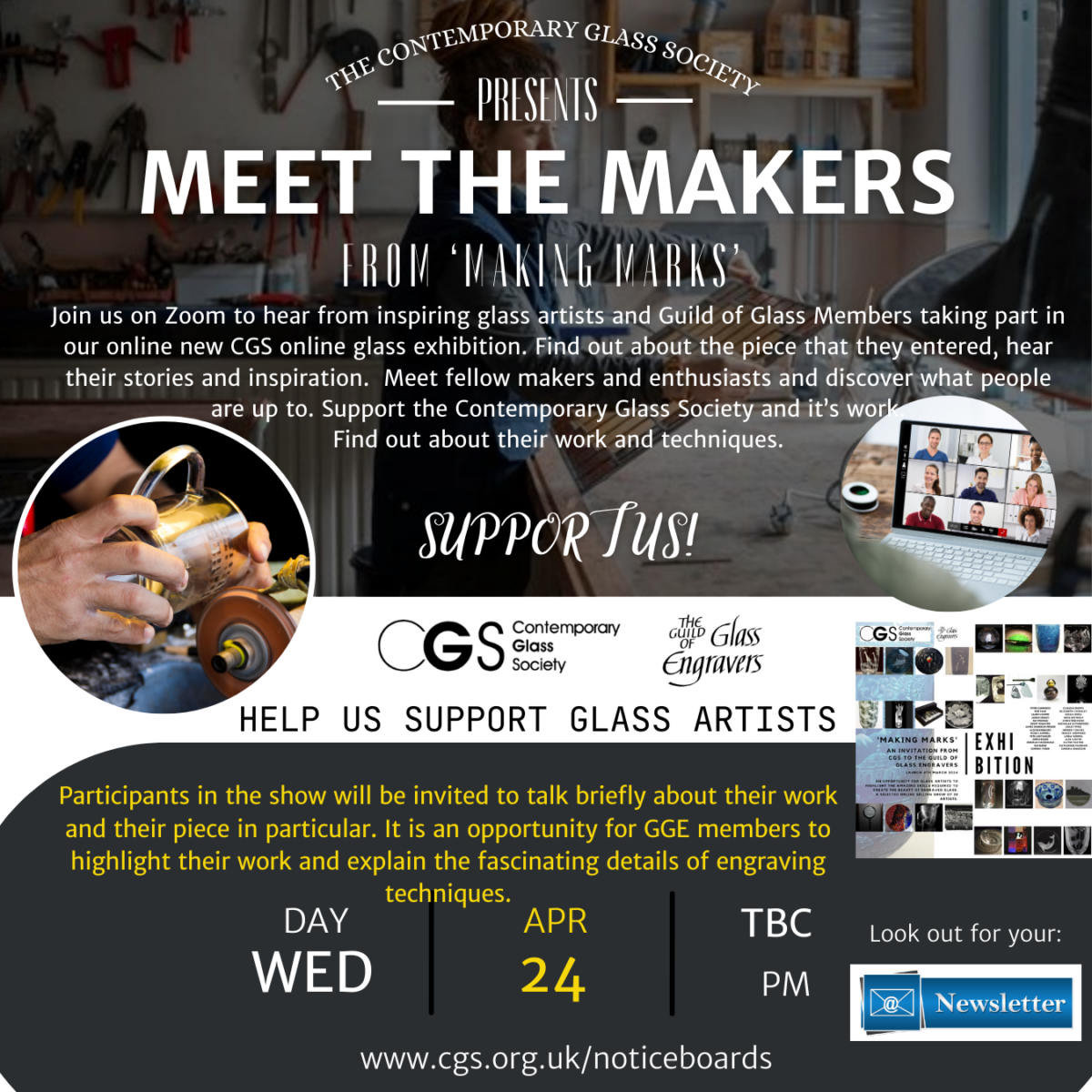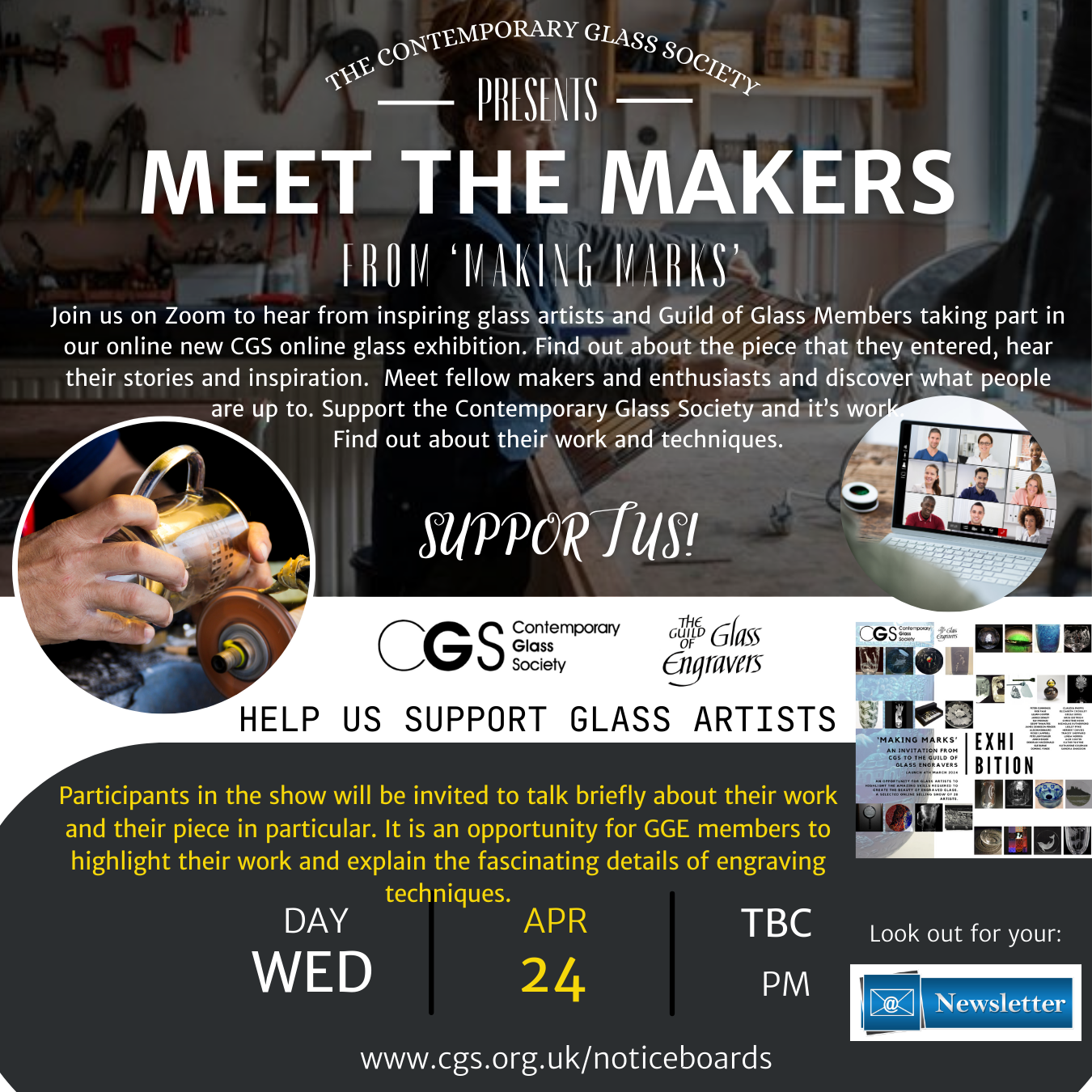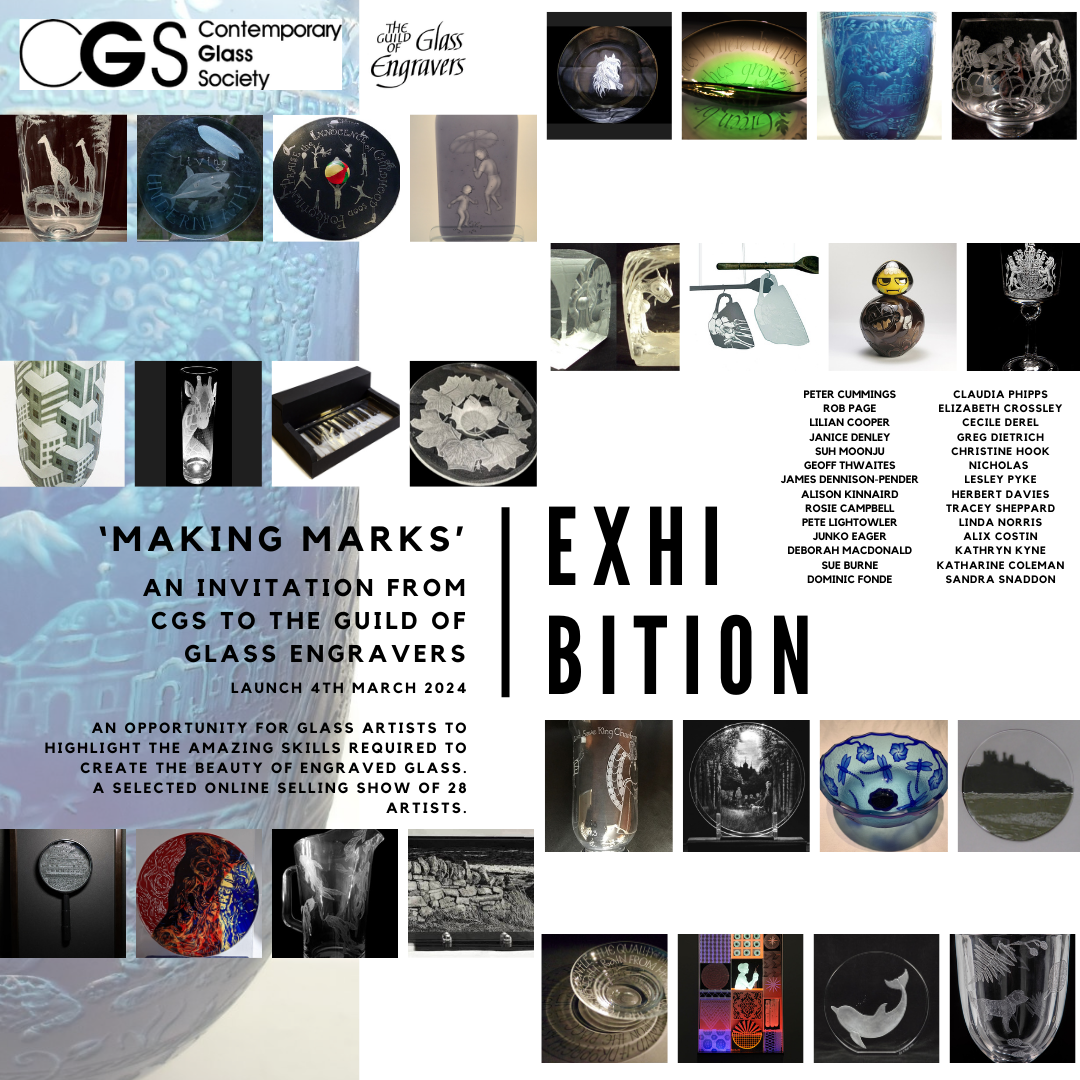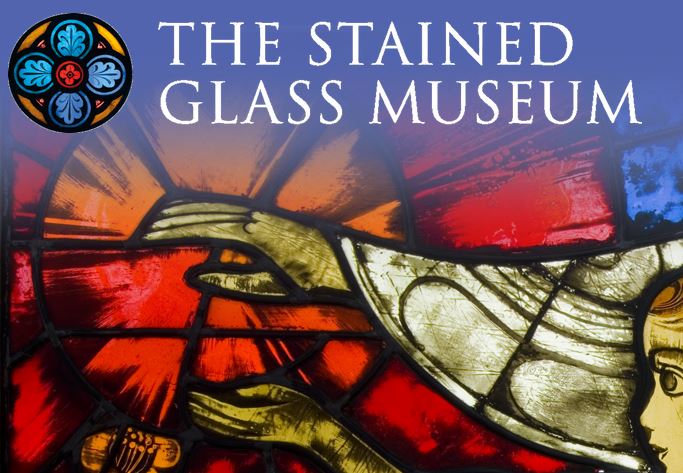|
Noticeboards Category: Symposiums/Lectures/Conferences

Meet the makers taking part in our current online glass gallery exhibition.
Time TBC – please keep an eye out for details in your Newsletter.


“Making Marks” Exhibition – an invitation from CGS to the Guild of Glass Engravers
The Contemporary Glass Society invited members of the Guild of Glass Engravers to take part in an online selected exhibition to run from 4th March 2024. CGS was delighted to have the opportunity to work with the Guild of Glass Engravers on this show.
The show, entitled “Making Marks” was an opportunity to highlight the amazing skills required to create the beauty of engraved glass.
This is part of CGS’s annual programme of 2 month long online exhibitions which are also selling exhibitions.
Meet the Makers event: 24th April
There will be a Zoom online “Meet the Maker” event on 24th April where participants in the show will be invited to talk briefly about their work and their piece in particular. It is an opportunity for GGE members to highlight their work and explain the fascinating details of engraving techniques.


Celebrating the fascinating material of glass, its industrial heritage, the skills and ingenuity of contemporary glass artists, and its place in our built environment.
A series of online talks (held via Zoom webinars) this spring to coincide with The Glass Heart exhibition at Two Temple Place, London, for which The Stained Glass Museum is a lending partner.
Tickets are £6.50/£5 Friends of SGM
https://stainedglassmuseum.com/toursandlectures
A spotlight on our glass heritage with National Glass Centre, Sunderland, St Helen’s World of Glass and Stourbridge Glass Museum
Wednesday 13 March, 7pm
Book Tickets
The Art of Glassblowing with Ayako Tani and Christopher Day
Wednesday 20 March, 7pm
Book Tickets
Architectural Glass: The Supreme Art with Andrew Moor
Wednesday 27 March, 7pm
Book Tickets
The Stained Glass Museum
South Triforium
Ely Cathedral
Ely
CB7 4DL
+44(0)1353 660347 www.stainedglassmuseum.com
